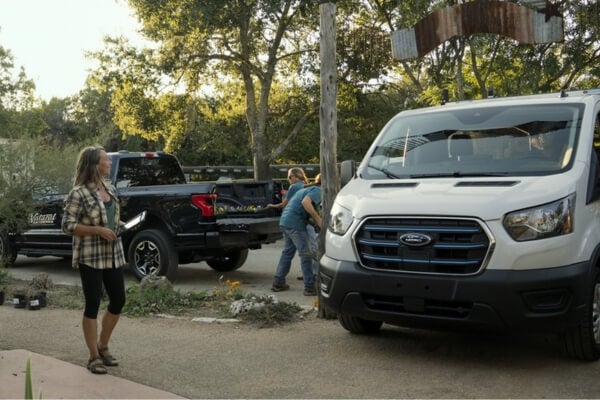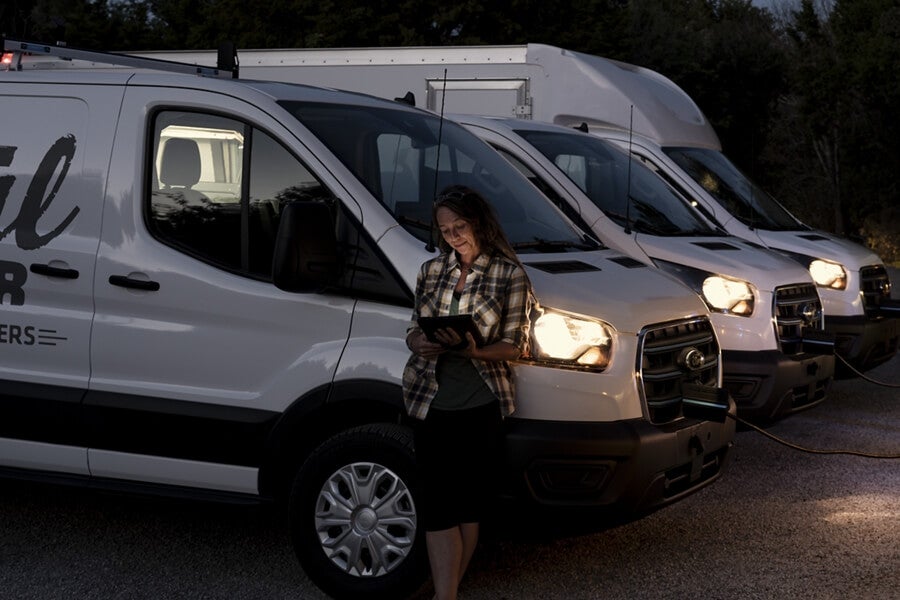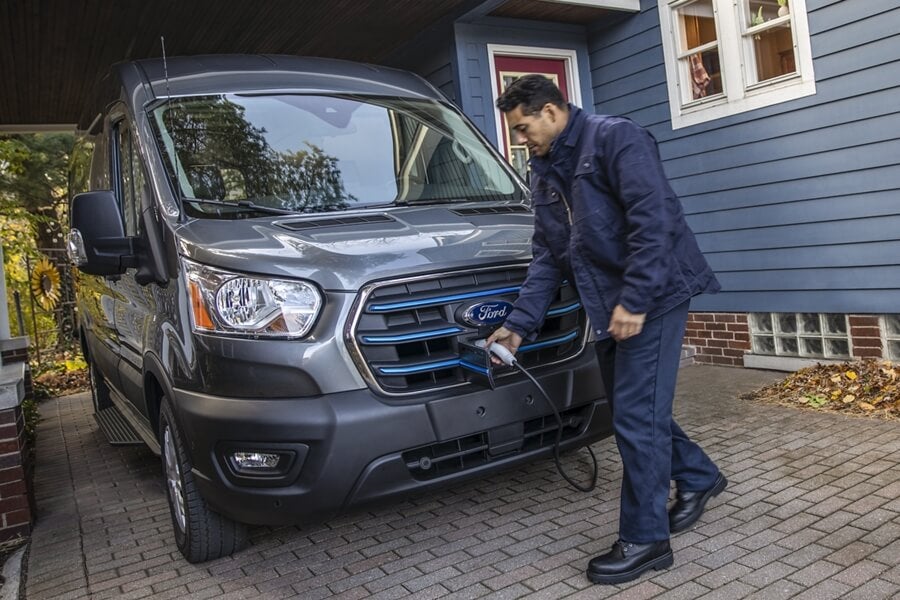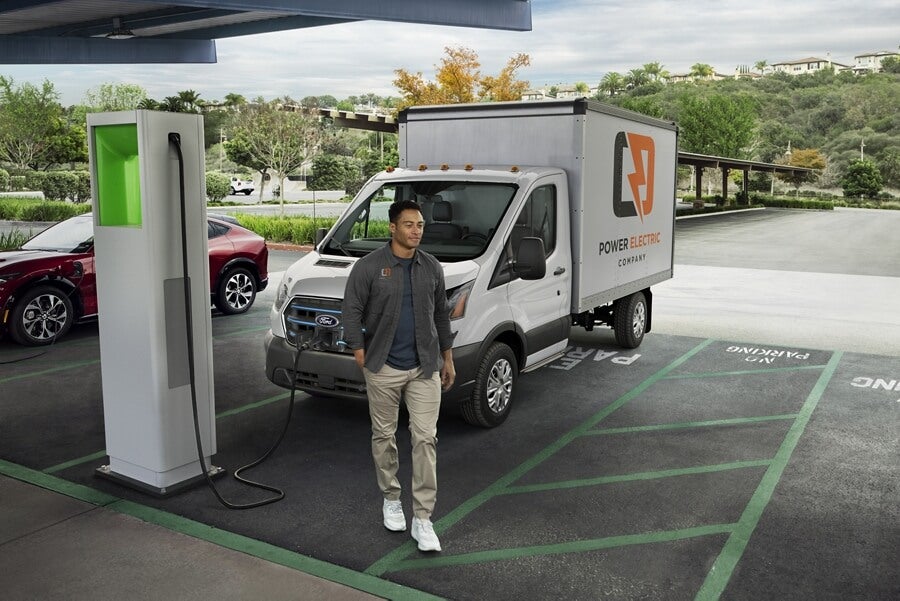New Ford E-Transit
New Ford E-Transit Commercial Work Vans
The automotive industry is experiencing a significant shift towards electric vehicles (EVs), and this transition is not limited to passenger cars alone. Commercial vehicles, such as vans and trucks, are also embracing the electric revolution. Ford, a renowned name in the automobile industry, has recently introduced its latest addition to the electric commercial vehicle market: the Ford E-Transit. In this article, we will explore the features, benefits, and impact of the new Ford E-Transit, along with its position in the evolving market.
The Rise of Electric Vehicles in the Commercial Sector
Over the past decade, electric vehicles have gained substantial traction in the automotive industry. This shift towards electric mobility is driven by environmental concerns, government regulations, and the desire to reduce operating costs. Commercial vehicles, which are often used for transportation and delivery purposes, contribute significantly to carbon emissions and fuel consumption. Electric commercial vehicles offer a viable solution to reduce carbon footprint and improve operational efficiency.

.
More Info
Ford's Entry into the Electric Commercial Vehicle Market
Recognizing the potential of electric commercial vehicles, Ford has taken a bold step forward with the introduction of the Ford E-Transit. Building upon the success of the iconic Ford Transit, the E-Transit is designed to cater to the needs of businesses while prioritizing sustainability and efficiency. This move showcases Ford's commitment to sustainable transportation solutions and its anticipation of market demand.
Key Features of the Ford E-Transit
The Ford E-Transit comes equipped with a range of features that make it a compelling choice for businesses looking to switch to electric vehicles. Here are some key features of the E-Transit:
1. Electric Powertrain
The E-Transit is powered by an all-electric drivetrain, eliminating tailpipe emissions and reducing reliance on fossil fuels. It offers smooth acceleration and instant torque, providing a seamless driving experience.
2. Impressive Range
With an estimated range of up to 126 miles on a single charge, the E-Transit ensures that businesses can cover their daily routes without compromising efficiency. The range is optimized for urban and suburban delivery operations.
3. Versatile Configurations

Ford offers multiple configurations for the E-Transit, including van, chassis cab, and cutaway models. This versatility allows businesses to customize the vehicle based on their specific requirements.
4. Generous Cargo Space
The E-Transit retains the spacious cargo area that the Ford Transit is known for, ensuring ample room for packages, equipment, or any other cargo. It provides a maximum cargo space of up to 487.3 cubic feet, accommodating diverse business needs.
5. Advanced Technology
Ford has incorporated advanced technology into the E-Transit to enhance safety, connectivity, and productivity. Features such as Ford Co-Pilot360™ technology, SYNC® 4, and an available Pro Power Onboard system contribute to a smarter and more efficient driving experience.
Benefits of Choosing the Ford E-Transit
Cost Savings: The transition to electric vehicles can significantly reduce operating costs, thanks to lower maintenance and energy expenses. The Ford E-Transit offers businesses the opportunity to save on fuel costs and benefit from tax incentives in certain regions.
Sustainability: By adopting the Ford E-Transit, businesses can contribute to a greener and cleaner environment. The elimination of tailpipe emissions reduces carbon footprint and helps combat climate change.
Enhanced Reputation: Companies that prioritize sustainability and environmental stewardship gain a competitive advantage in the market". The adoption of electric vehicles, such as the Ford E-Transit, demonstrates a commitment to sustainability, attracting eco-conscious customers and partners.

Regulatory Compliance: As governments implement stricter emissions standards and regulations, businesses that embrace electric vehicles position themselves for regulatory compliance, avoiding penalties and ensuring long-term operational viability.
Improved Work Environment: The Ford E-Transit offers a quieter and smoother driving experience compared to traditional gasoline-powered vans. This creates a more pleasant work environment for drivers and reduces noise pollution in urban areas.
Charging Infrastructure and Range Anxiety
One concern often associated with electric vehicles is charging infrastructure and range anxiety. However, the industry has made significant progress in expanding charging networks, making it easier for businesses to access charging stations. Additionally, the FordPass™ Charging Network provides E-Transit owners with a seamless charging experience and access to a vast network of public charging stations.
- 40% fewer scheduled maintenance costs*
- NO tailpipe emissions
- Supported by the Ford Pro Network including Gresham Ford
Three charging solutions exist to help keep your environmentally friendly charged and on the road.

Depot Charging
Ask the exports Gresham Ford Pros how you can install hardware and software to ensure that while your fleet isn't on the road, it's getting ready for it if you want on-site charging capability.

Home Charging
When it's convenient, charge. The Ford Mobile Power Cord can be used to recharge the E-Transit work van at home. There is also the available Ford Connected Charge Station if you want to increase your home charging speed.

Public Charging
With the Ford Blue Oval Charging Network at their disposal, your drivers can easily locate and utilize one of the approximately 79,000 charging plugs*** located all around the country.
Environmental Impact and Sustainability
The Ford E-Transit plays a crucial role in reducing carbon emissions and improving air quality. By transitioning to electric vehicles, businesses can contribute to a more sustainable future. The E-Transit's zero tailpipe emissions make it an eco-friendly choice, helping combat climate change and reducing dependence on fossil fuels.
Competitive Landscape and Market Outlook
The electric commercial vehicle market is witnessing rapid growth and intense competition. While several manufacturers are entering this segment, Ford's strong brand reputation and legacy in the commercial vehicle sector provide a competitive advantage. The company's commitment to sustainability and technological innovation positions the Ford E-Transit as a frontrunner in the market.
Testimonials from Ford E-Transit Users
Top Gear Team: "The Ford e-Transit is a joy to spend time in. The best electric van of the current breed."
Electrifying, the Electric Car Experts: "The van which is called “the backbone of Britain” has finally gone electric - and it is clever, usable, economical and good to drive."
Maintenance and Cost Considerations
Electric vehicles, including the Ford E-Transit, require less maintenance compared to their gasoline counterparts. With fewer moving parts and no oil changes, businesses can save on maintenance expenses in the long run. Additionally, the lower cost of electricity compared to gasoline contributes to cost savings over time.
The new Ford E-Transit represents a significant milestone in the electric commercial vehicle market. Its impressive range, versatile configurations, and advanced technology make it an attractive option for businesses seeking sustainable transportation solutions. By embracing the Ford E-Transit, companies can reduce their carbon footprint, lower operating costs, and gain a competitive edge in an evolving market.
Ford E-Transit FAQs (Frequently Asked Questions)
Q: How long does it take to charge the Ford E-Transit?
A: Charging times can vary depending on the charging station and the E-Transit's battery capacity. On average, it can take approximately 8 to 13 hours to fully charge the vehicle using a 240-volt charger.
Q: What is the warranty coverage for the Ford E-Transit's battery?
A: The Ford E-Transit comes with an 8-year/100,000-mile warranty for its electric vehicle components, including the battery.
Q: Can the Ford E-Transit handle extreme weather conditions?
A: Yes, the E-Transit is designed to operate in various weather conditions, including extreme temperatures. The vehicle's battery management system ensures optimal performance and durability.
Q: Are there any government incentives for purchasing the Ford E-Transit?
A: Government incentives and tax credits for electric vehicles vary by region. It is advisable to check with local authorities or consult a Ford dealer to understand the available incentives in your area.
Q: How does the Ford E-Transit contribute to reducing greenhouse gas emissions?
A: The Ford E-Transit produces zero tailpipe emissions since it runs solely on electricity. By choosing the E-Transit, businesses can significantly reduce their greenhouse gas emissions and contribute to a cleaner environment.
 *Scheduled maintenance costs based on recommended service schedule as published in the Owner’s Manual. Analysis reflects Ford Motor Company’s standard method for calculating scheduled maintenance cost and reflects data available in 2019 and 2020. **Visit fueleconomy.gov for more information.***Based on original equipment manufacturers (OEM) automotive manufacturers that sell all-electric vehicles and have active charging networks. Department of Energy data used. FordPass compatible with select smartphone platforms, is available via a download. Message and data rates may apply.
*Scheduled maintenance costs based on recommended service schedule as published in the Owner’s Manual. Analysis reflects Ford Motor Company’s standard method for calculating scheduled maintenance cost and reflects data available in 2019 and 2020. **Visit fueleconomy.gov for more information.***Based on original equipment manufacturers (OEM) automotive manufacturers that sell all-electric vehicles and have active charging networks. Department of Energy data used. FordPass compatible with select smartphone platforms, is available via a download. Message and data rates may apply. 
